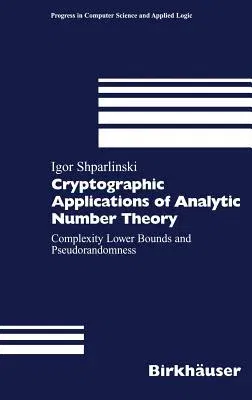Igor Shparlinski
(Author)Cryptographic Applications of Analytic Number Theory: Complexity Lower Bounds and Pseudorandomness (2003)Hardcover - 2003, 11 December 2002

Qty
1
Turbo
Ships in 2 - 3 days
In Stock
Free Delivery
Cash on Delivery
15 Days
Free Returns
Secure Checkout

Part of Series
Progress in Computer Science and Applied Logic
Part of Series
Progress in Computer Science and Applied Logic (PCs)
Part of Series
Progress in Computer Science and Applied Logic (PCs) Progres
Print Length
414 pages
Language
English
Publisher
Birkhauser
Date Published
11 Dec 2002
ISBN-10
3764366540
ISBN-13
9783764366544
Description
Product Details
Author:
Book Edition:
2003
Book Format:
Hardcover
Country of Origin:
US
Date Published:
11 December 2002
Dimensions:
23.39 x
15.6 x
2.39 cm
ISBN-10:
3764366540
ISBN-13:
9783764366544
Language:
English
Location:
Basel
Pages:
414
Publisher:
Series:
Weight:
771.11 gm